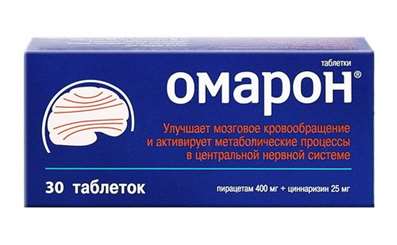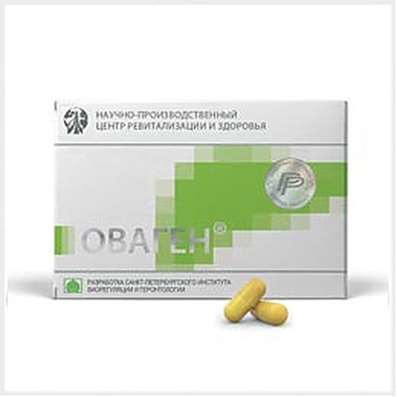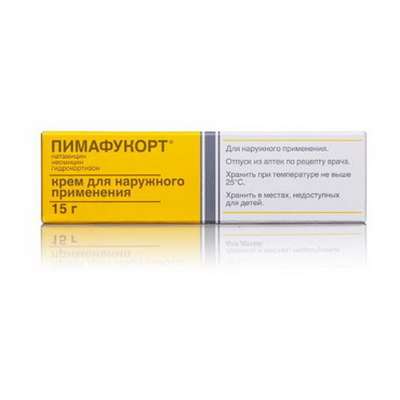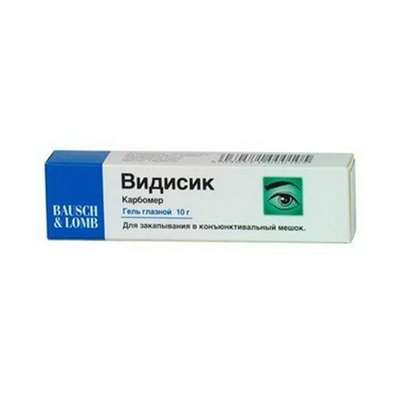Instruction for use: Urotol
I want this, give me price
Active substance: Tolterodine
ATX Code
G04BD07 Tolterodine
Pharmacological group
M Cholinolytics
The nosological classification (ICD-10)
N31.1 Reflex neuropathic bladder, not elsewhere classified
hyperreflexia, Overactive Bladder, detrusor hyperreflexia, detrusor hyperreflexia
N31.2 neurogenic bladder weakness, not elsewhere classified
Urinary incontinence in a stressful situation, Atony of bladder, Atony of the bladder (the sphincter) (neurogenic), Impaired function of the sphincter of the bladder, Neurogenic bladder disorders, Neurogenic bladder disorder, Neurogenic bladder, Functional insufficiency of the sphincter of the bladder, Imperative incontinence
N39.3 Involuntary urination
Urinary incontinence in women, Anishuriya, Urinary incontinence
N39.4 Other specified types of urinary incontinence
Urinary incontinence, Bed-wetting, Frequent nocturnal urination, Urinary incontinence in women, Anishuriya, Primary nocturnal enuresis, Primary nocturnal enuresis in children
R32 Urinary incontinence unspecified
daytime enuresis, Idiopathic bladder instability, Urinary incontinence, nocturia, The disorder of the bladder sphincter function, Spontaneous urination, Mixed forms of urinary incontinence, Functional disorders of micturition, Functional micturition disorders, Functional enuresis in children, Enuresis
R39.1 Other difficulties with micturition
Frequent urination, urinary retention, strangury, Obstructed flow of urine, Violation of urination, Violation of urination, Violation of bladder emptying, Violation of the outflow of urine, Frequent urination, Abnormalities of urination
Structure and Composition
Tablets, coated with a film membrane 1 tab.
active substance:
Tolterodine hydrotartrate 1/2 mg
Excipients
Core: MCC - 73/146 mg; Sodium carboxymethyl starch (type A) 3.5 / 7 mg; Silicon dioxide colloidal - 1/2 mg; Sodium stearyl fumarate - 1.5 / 3 mg
Film membrane: hypromellose 2910/5 - 1.75 / 3.5 mg; Macrogol 6000 - 0.3 / 0.6 mg; Titanium dioxide - 0.15 / 0.4 mg; Talc - 0.25 / 0.5 mg; Dye iron oxide yellow - 0.05 / - mg
Description of dosage form
The tablets covered with a film cover, 1 mg: round, biconcave, yellow color.
Tablets, film-coated, 2 mg: round, biconvex, white.
pharmachologic effect
Pharmacological action - antidizuricheskoe, m-cholinoblocking.
Pharmacodynamics
Tolterodin and its 5-hydroxymethyl derivative are highly specific for muscarinic receptors, competitively block m-cholinergic receptors with the highest selectivity for bladder receptors (in comparison with salivary gland receptors). The drug reduces the tone of the smooth muscles of the urinary tract, detrusor contractile activity, and also reduces salivation.
In doses exceeding therapeutic, causes incomplete emptying of the bladder and increases the amount of residual urine.
The therapeutic effect of tolterodine is achieved in 4 weeks. Tolterodin does not inhibit CYP2D6, 2C19, 3A4 or 1A2.
Pharmacokinetics
Suction. After taking the drug inside tolterodine is rapidly absorbed from the digestive tract. Cmax in the serum is achieved after 1-2 hours. In the range of therapeutic doses (1-4 mg) there is a linear relationship between the value of Cmax in the serum and the dose of the drug.
Absolute bioavailability of tolterodine is 65% in individuals with CYP2D6 deficiency and 17% in most patients.
Food does not affect the bioavailability of the drug, although the concentration of tolterodine rises when it is taken with food.
Distribution. Tolterodin and the 5-hydroxymethyl metabolite bind mainly to the orosomucoid. Unrelated fractions are 3.7 and 36%, respectively. Vd tolterodine is equal to 113 liters.
Due to the difference in binding to the proteins of tolterodine and the 5-hydroxymethyl metabolite, the AUC of tolterodine in persons with CYP2D6 deficiency is close to the sum of the AUC values of tolterodine and the 5-hydroxymethyl metabolite in most patients with the same dosage regimen. Therefore, the safety, tolerability and clinical effect of the drug are independent of the activity of CYP2D6.
Metabolism. Tolterodin is generally metabolized in the liver with the polymorphic enzyme CYP2D6 to form a pharmacologically active 5-hydroxymethyl metabolite, which is then metabolized to 5-carboxylic acid and N-dealkylated 5-carboxylic acid. 5-hydroxymethyl metabolite has pharmacological properties close to the tolterodine and in most patients enhances the effect of the drug.
In persons with a reduced metabolism (with a deficiency of CYP2D6), tolterodine is dealkylated with CYP3A4 isoenzymes to form N-dealkylated tolterodine, which does not possess pharmacological activity.
Excretion. The systemic clearance of tolterodine in the serum in most patients is about 30 l / h. After taking T1 / 2, tolterodine is 2-3 hours, and T1 / 2 5-hydroxymethyl metabolite 3-4 hours. In persons with a decreased metabolism of T1 / 2, about 10 hours.
The decrease in the clearance of the initial compound in individuals with CYP2D6 deficiency leads to an increase in the concentration of tolterodine (approximately 7-fold) against the background of not detectable concentrations of the 5-hydroxymethyl metabolite.
Approximately 77% of tolterodine is excreted in the urine and 17% - with feces. Less than 1% of the dose is excreted unchanged and about 4% - in the form of a 5-hydroxymethyl metabolite. 5-carboxylic acid and N-dealkylated 5-carboxylic acid constitute approximately 51 and 29% of the amount excreted in the urine, respectively.
Pharmacokinetics in special clinical cases
The AUC value of tolterodine and its active 5-hydroxymethyl metabolite increases approximately 2-fold in patients with cirrhosis of the liver.
The average AUC value of tolterodine and 5-hydroxymethyl metabolite is 2 times higher in patients with severe renal impairment (GFR <30 mL / min). The plasma content of other metabolites in these patients is much higher (12 times). The clinical significance of an increase in the AUC of these metabolites is unknown.
Indications
Hyperreflexia (hyperactivity, instability) of the bladder, manifested by frequent, mandatory urge to urinate, increased frequency of urination and / or urinary incontinence.
Contraindications
Hypersensitivity to the components of the drug;
Retention of urination;
Non-treatable angle-closure glaucoma;
Myasthenia gravis;
Severe ulcerative colitis;
Megacolon;
Age to 18 years.
With caution: severe obstruction of the lower urinary tract (due to the risk of retention of urination), an increased risk of decreased gastrointestinal motility, obstructive diseases of the digestive tract (eg stenosis of the pylorus), renal or hepatic insufficiency (daily dose should not exceed 2 mg), neuropathy, hiatal hernia Aperture apertures.
pregnancy and lactation
The use of tolterodine in pregnancy is possible only if the intended benefit of therapy for the mother exceeds the potential risk to the fetus. Since data on the excretion of tolterodine with breast milk are not available, the use of the drug during lactation should be avoided.
Women of childbearing age should use reliable methods of contraception during therapy with tolterodine.
Side effects
From the immune system: allergic reactions, Quincke's edema (very rare).
From the nervous system: nervousness, impaired consciousness, hallucinations, dizziness, drowsiness, paresthesia, headache.
On the part of the organs of vision: dry eyes, disruption of accommodation.
From the CCC: tachycardia, increased heart rate, arrhythmia (rarely).
From the gastrointestinal tract: dry mouth, indigestion, constipation, abdominal pain, flatulence, vomiting, rarely - gastroesophageal reflux.
From the skin: dry skin.
From the urinary system: delay urination.
Other: increased fatigue, chest pain, peripheral edema, bronchitis, weight gain.
Interaction
The simultaneous administration of tolterodine with strong inhibitors of CYP3A4, such as macrolide antibiotics (erythromycin and clarithromycin), antifungal agents (ketoconazole, itraconazole and miconazole), protease inhibitors should be avoided, due to the possibility of increasing serum albumin concentration, which increases the risk of drug overdose.
Agonists muscarinic cholinergic receptors reduce the effectiveness of tolterodine.
Drugs that have anticholinergic properties, enhance action and increase the risk of side effects.
The drug weakens the effect of prokinetics (metoclopramide, cisapride). Possible pharmacokinetic interaction with drugs metabolized by cytochrome P450 isoenzymes CYP2D6 or CYP3A4 (inducers and inhibitors). Co-administration with fluoxetine (a potent inhibitor of CYP2D6, which is metabolized to norfluoxetine, an inhibitor of CYP3A4) only leads to a slight increase in the total AUC of tolterodine and its active 5-hydroxymethyl metabolite, which does not cause a clinically significant interaction.
There is no interaction with warfarin and combined oral contraceptives (containing ethinyl estradiol / levonorgestrel).
Tolterodin is not an inhibitor of CYP2D6, 2C19, 3A4, 1A2, therefore, it is not expected to increase the level of drugs that are metabolized by these isoenzymes in plasma with co-administration with tolterodine.
Dosing and Administration
Inside, regardless of food intake, 1 table. 2 mg 2 times a day. The total dose of the drug can be reduced to 2 mg / day (1 table 1 mg 2 times a day), based on the individual tolerance of the drug.
For violations of the liver and / or kidney function, as well as with simultaneous use with ketoconazole or other strong inhibitors of CYP3A4, it is recommended to reduce the dose to 1 mg 2 times a day.
The effectiveness of therapy should be re-evaluated after 2-3 months after the start of treatment.
Overdose
Symptoms: paresis of accommodation, mydriasis, painful urge to urinate, hallucinations, severe agitation, convulsions, respiratory failure, tachycardia, prolongation of the QT interval, urinary retention.
Treatment: gastric lavage, the appointment of activated charcoal. With the development of hallucinations, strong excitation - physostigmine, with convulsions or severe excitation - anxiolytics of benzodiazepine structure, with developed respiratory failure - IVL, with tachycardia - β-adrenoblockers, with urinary retention - catheterization of the bladder, with mydriasis - pilocarpine in eye drops and / Or transferring the patient to a dark place.
Form of issue
Tablets, film-coated, 1 mg or 2 mg. According to Table 14. In the blister of PVC / PVDC / Al. By 2 or 4 bl. Placed in a cardboard box.
Conditions of supply from pharmacies
On prescription.
storage conditions
At temperatures not higher than 25 ° C, in the original packaging.
Keep out of the reach of children.
Shelf life
2 years.
Do not use after the expiry date printed on the package.

 Cart
Cart





